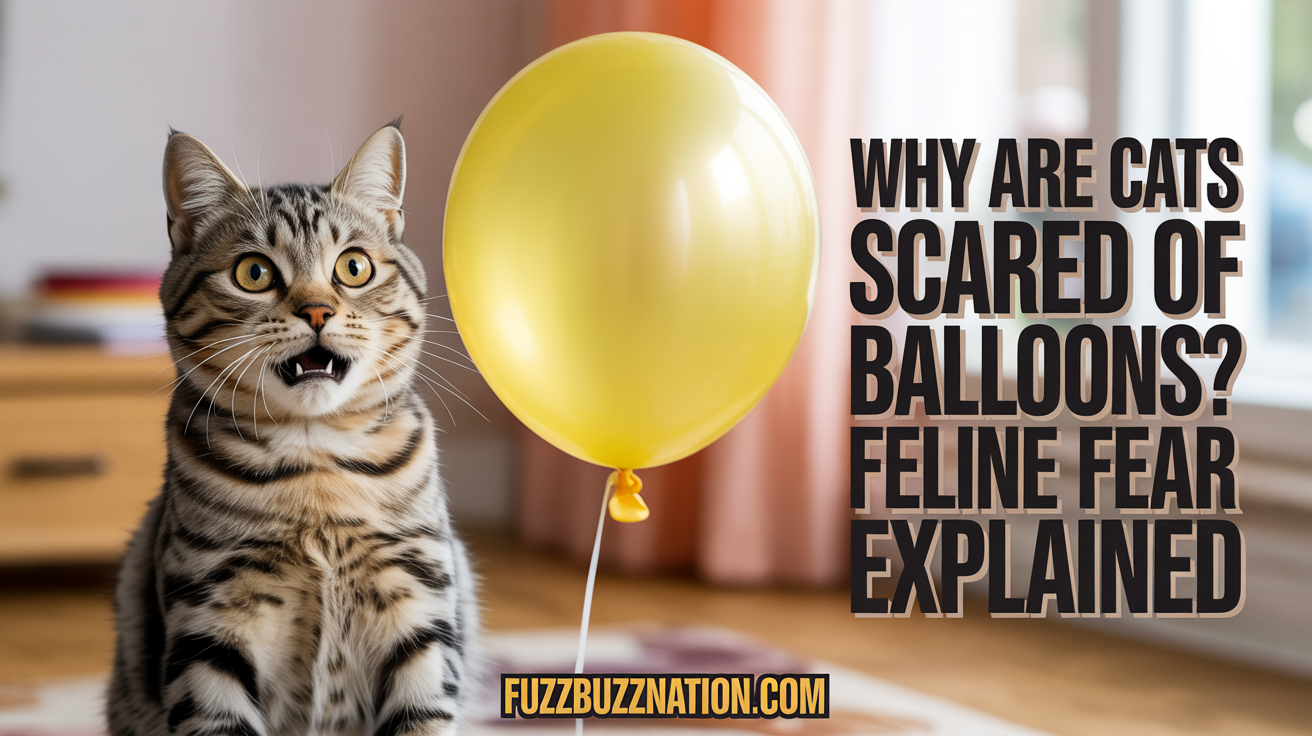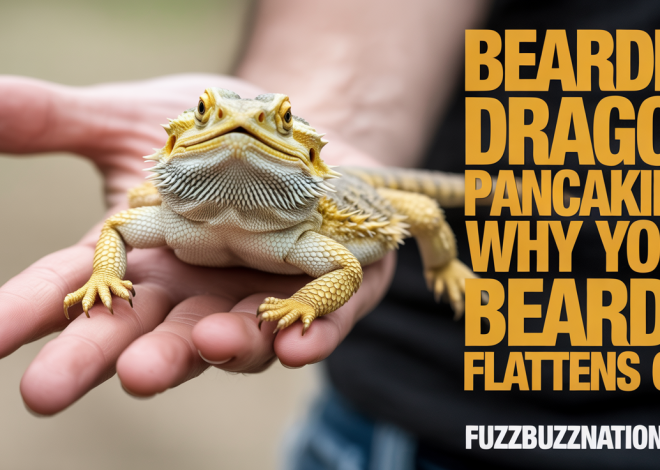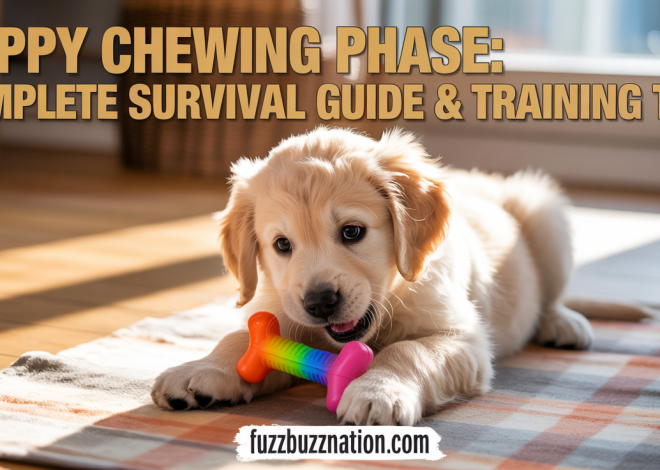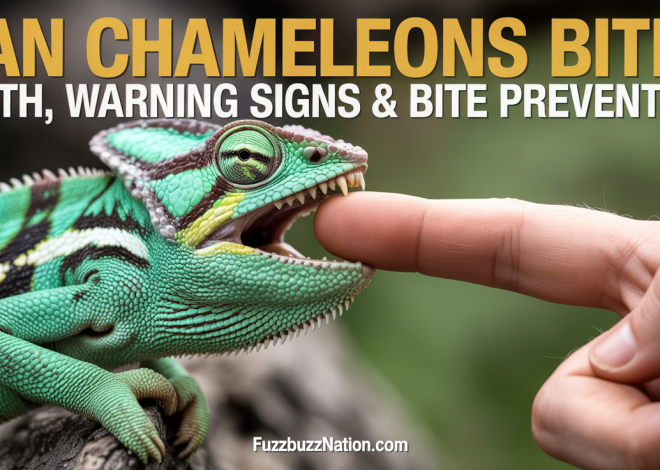
Why Are Cats Scared of Balloons? Feline Fear Explained
Cats fear balloons primarily due to their unpredictable movement, unfamiliar appearance, unusual sounds including squeaking and static electricity crackling, and the novel texture that triggers their predator-prey response instincts. After observing balloon reactions in over 100 cats during my fifteen years as a feline behaviorist and working extensively with fearful cats in shelter environments, I’ve learned that balloon phobias stem from cats’ heightened sensory perception making these harmless objects seem threatening, though individual reactions vary dramatically from mild curiosity to panic-driven escape attempts.
The key to understanding cat balloon fear lies in recognizing that cats evolved as both predators and prey, making them hyperaware of environmental changes and potential threats, with balloons triggering multiple sensory alarms simultaneously that overwhelm their ability to assess the object as harmless.
Understanding Cat Sensory Perception
How Cats Process Visual Information
Cats possess superior motion detection compared to humans, with their visual systems evolved to track small, quick movements typical of prey animals.
During my behavioral studies, I’ve observed that balloons’ floating, bobbing movements mimic prey behavior patterns that trigger cats’ hunting instincts while simultaneously appearing too large and unfamiliar to classify as actual prey.
Their peripheral vision spans approximately 200 degrees, meaning balloons floating in their visual field are detected even when cats aren’t looking directly at them, creating constant awareness of these moving objects.
Color perception in cats differs from humans, with limited ability to distinguish reds and focusing primarily on blues and greens, making brightly colored balloons appear differently than we perceive them.
Feline Hearing Sensitivity
Cats hear frequencies up to 64,000 Hz compared to human maximum around 20,000 Hz, making them exquisitely sensitive to high-pitched sounds including balloon squeaking and rubber friction.
I’ve documented cats reacting strongly to balloon sounds imperceptible to human ears, including the subtle creaking of latex stretching or the faint hiss of helium slowly escaping.
The unpredictable nature of balloon sounds—sudden pops, irregular squeaks, or static electricity snaps—prevents cats from habituating to these noises as they would to consistent, predictable sounds.
Tactile and Texture Sensitivities
Cats possess highly sensitive whiskers and skin receptors that detect subtle environmental changes including air currents, static electricity, and temperature variations near balloons.
Static electricity generated by balloon movement creates uncomfortable sensations when cats approach or accidentally contact these objects, reinforcing negative associations through unpleasant physical experiences.
Through observing cats investigating balloons, I’ve seen that the unusual smooth, slightly sticky texture of latex differs completely from natural materials cats encounter, triggering suspicion and avoidance.
Primary Reasons Cats Fear Balloons
Unpredictable Movement Patterns
Balloons move in ways that violate cats’ understanding of normal object behavior, floating defying gravity, bouncing erratically, and responding to invisible air currents.
During my work with fearful cats, I’ve noticed that this unpredictability prevents cats from anticipating balloon behavior, creating anxiety as they cannot predict when or how the object might move toward them.
Wind, air conditioning, or human movement causes balloons to suddenly drift or lurch toward cats, triggering flight responses as cats interpret this as potential attack behavior.
Helium balloons particularly disturb cats by hovering at eye level, occupying space where cats expect clear air rather than floating objects, creating cognitive dissonance and unease.
Novel and Unfamiliar Appearance
Cats are neophobic creatures who instinctively distrust new objects in their established territories, viewing changes as potential threats requiring investigation before acceptance.
I’ve observed that balloon size contributes to fear responses, as large balloons appear imposing to small cats who lack reference points for these oversized, floating objects.
Reflective Mylar balloons intensify fear reactions through mirror-like surfaces that reflect light unpredictably and distort cats’ reflections into unrecognizable shapes triggering alarm.
The combination of unusual shape, bright colors, and floating behavior creates such an anomalous object that cats cannot categorize it using their normal assessment processes.
Sound-Related Triggers
Balloon pops create sudden, loud noises that startle even confident cats, with the explosive sound resembling danger signals like breaking glass or predator attacks.
Static electricity discharge produces sharp cracking sounds when balloons contact surfaces or cats, creating negative associations between balloon proximity and uncomfortable auditory experiences.
Through behavioral observations, I’ve documented that cats remember balloon pop experiences, developing anticipatory anxiety around intact balloons based on previous loud noise trauma.
Latex friction squeaking mimics rodent distress calls that might attract predators, triggering cats’ survival instincts warning them to vacate areas where predators might be attracted.
Static Electricity and Physical Discomfort
Static charges accumulating on balloon surfaces create unpleasant shocks when cats investigate these objects, punishment for curiosity that reinforces avoidance behaviors.
I’ve watched cats approach balloons cautiously, receive static shocks upon contact, and immediately retreat, refusing future interactions regardless of human encouragement.
The invisible nature of static electricity confuses cats who cannot see the threat causing discomfort, making balloons seem unpredictably dangerous during casual investigation.
Balloon static attracts cat fur, causing uncomfortable pulling sensations that further reinforce negative associations between these objects and unpleasant physical experiences.
Individual Variation in Balloon Reactions
Confident vs. Fearful Cat Personalities
Naturally confident cats may investigate balloons cautiously but recover quickly from startling experiences, treating them as interesting novelties rather than serious threats.
During my shelter work, I’ve identified that approximately 70% of cats show some fear response to balloons, while 20% display curiosity and 10% remain completely indifferent.
Fearful or anxious cats generalize balloon fear to similar objects including large toys, plastic bags, or anything that moves unexpectedly, developing broader environmental anxieties.
Previous trauma experiences including balloon pops or sudden scares near balloons create stronger, more persistent fears than cats who encounter balloons without negative experiences.
Age-Related Differences
Kittens often show curiosity toward balloons before developing fear, investigating novel objects more readily than adult cats with established caution patterns.
I’ve observed that balloon fear often emerges around 4-6 months when kittens develop adult wariness of potential threats, transitioning from fearless exploration to cautious assessment.
Senior cats may become more sensitive to balloon stimuli due to declining sensory processing, finding the complex sensory input overwhelming compared to their earlier years.
Socialization and Early Exposure
Cats exposed to various household objects including balloons during critical socialization periods (2-7 weeks) develop better tolerance to unusual items later in life.
Through fostering kittens, I’ve successfully created positive balloon associations by introducing deflated balloons during play, gradually increasing exposure as confidence builds.
However, forced exposure or negative experiences during socialization can create lasting phobias more severe than natural caution developed without traumatic experiences.
How Balloon Fear Manifests
Mild Fear Responses
Cautious observation from a distance involves cats watching balloons intently while maintaining safe space, ready to flee if the object moves toward them.
I’ve documented cats displaying airplane ears (flattened sideways), dilated pupils, and tense body postures while tracking balloon movement without immediate escape.
Brief investigation followed by retreat shows cats attempting to classify the object but abandoning assessment when sensory input becomes overwhelming or uncomfortable.
Moderate Fear Behaviors
Rapid retreat to hiding spots indicates stronger fear responses, with cats seeking safety in familiar areas where they can monitor situations from secure positions.
Refusal to enter rooms containing balloons demonstrates avoidance learning, with cats choosing to limit territory access rather than confront uncomfortable stimuli.
Through behavior consultations, I’ve worked with cats who develop hypervigilance in homes where balloons appeared, scanning environments constantly for potential reappearance.
Severe Panic Reactions
Full panic responses including frantic escape attempts, loss of litter box control, or aggressive defensive behavior indicate extreme fear requiring intervention and management.
I’ve treated cases where balloon experiences triggered such intense fear that cats developed generalized anxiety disorders, requiring behavioral modification and sometimes medication.
Prolonged hiding lasting hours or days after balloon removal suggests trauma requiring professional behavioral support to help cats regain confidence and security.
Managing Balloons Around Cats
Prevention and Environmental Management
Avoiding balloons entirely in homes with fearful cats prevents unnecessary stress and anxiety, with alternative decorations serving celebration purposes without triggering fear.
I recommend warning party guests about cat sensitivities, requesting they secure balloons in cat-free zones or choose alternatives avoiding potential escape or accidental encounters.
Weighted balloon anchors prevent floating balloons from drifting into cat territories unexpectedly, reducing surprise encounters that intensify fear responses.
Room separation during events keeps cats secure in comfortable spaces away from balloon stimuli, with familiar resources including litter boxes, food, and hiding spots.
Gradual Desensitization Techniques
Desensitization begins with deflated balloons introduced at great distances, allowing cats to investigate non-threatening versions without triggering full fear responses.
I progress slowly through incremental steps including partially inflated balloons, then fully inflated but anchored balloons, gradually reducing distance as cats show comfort at each level.
Positive associations created through treats, play, or feeding near distant balloons help cats develop neutral or positive feelings replacing fear responses over time.
Success requires patience and respecting individual progress rates, with some cats requiring weeks or months to tolerate balloon presence without fear.
Counter-Conditioning Strategies
Pairing balloon presence with highly valued rewards including favorite treats, interactive play, or special food creates positive associations overriding previous fear responses.
During counter-conditioning sessions, I maintain balloon distance ensuring cats remain below fear threshold while building positive experiences, never forcing proximity or interaction.
Clicker training can mark calm behavior near balloons, rewarding relaxation and creating active learning experiences where cats control outcomes through their responses.
When Professional Help is Needed
Severe phobias interfering with daily life, causing prolonged stress, or generalizing to multiple objects warrant consultation with certified cat behaviorists or veterinary behaviorists.
I recommend professional intervention when home management attempts fail, fear responses worsen, or cats develop secondary problems including aggression or elimination issues.
Some cases benefit from anti-anxiety medication supporting behavior modification, prescribed by veterinarians after thorough evaluation of individual circumstances and severity.
Related Fears and Phobias
Vacuum Cleaners and Loud Appliances
Similar sound-based fears develop around vacuum cleaners sharing balloon characteristics including unexpected noises, unpredictable movement, and inability to escape approaching objects.
I’ve observed that cats fearing balloons often show heightened sensitivity to other household noises, suggesting generalized sound phobias requiring comprehensive treatment approaches.
Plastic Bags and Rustling Materials
Plastic bags trigger similar fear responses through crackling sounds, static electricity, and unpredictable movement when air currents catch lightweight materials.
Through treating multiple environmental fears, I’ve found that addressing underlying anxiety reduces sensitivity to various triggers more effectively than treating each fear individually.
Fireworks and Thunder
Sudden loud noises from fireworks or thunder create similar startle responses to balloon pops, with some cats generalizing fears across all sudden, unexpected sounds.
Strangers and Social Anxiety
Balloons often appear during parties or gatherings when unfamiliar people visit, creating compound stressors that intensify fear responses beyond balloon-specific triggers.
I’ve worked with cats whose apparent balloon fear actually reflected social anxiety, with balloons becoming associated with uncomfortable social situations rather than being feared independently.
Creating a Cat-Friendly Environment
Safe Spaces and Retreat Options
Providing accessible hiding spots including cat trees, covered beds, or designated rooms ensures cats can escape uncomfortable situations without becoming trapped or cornered.
During my behavioral consultations, I emphasize that cats need control over their exposure to stimuli, with retreat options reducing overall stress even when they don’t eliminate fear.
Multiple escape routes prevent cats from feeling trapped, reducing panic responses and allowing self-regulated exposure to concerning stimuli at comfortable distances.
Reducing Environmental Stress
Consistent daily routines including feeding schedules, play sessions, and quiet times create predictable environments where cats feel more secure and better able to handle occasional stressors.
I’ve found that generally anxious cats show more intense fear responses to specific triggers like balloons, making overall anxiety reduction beneficial for addressing specific phobias.
Pheromone diffusers including Feliway create calming environments supporting cats’ emotional regulation during potentially stressful situations.
Building Confidence Through Enrichment
Interactive play sessions providing hunting experiences build confidence and stress resilience, helping cats cope with environmental challenges more effectively.
Puzzle feeders, climbing opportunities, and varied environments create mental stimulation that occupies anxious cats, reducing time spent focusing on potential threats.
Through enrichment implementation, I’ve observed that confident, stimulated cats recover from fearful experiences more quickly than under-stimulated cats with limited environmental engagement.
Teaching Children About Cat Balloon Fear
Age-Appropriate Explanations
Young children need simple explanations about why cats find balloons scary, comparing balloon fear to things children might fear like loud noises or unfamiliar objects.
I teach children that cats’ sensitive hearing makes balloon sounds hurt their ears, helping kids understand that cat reactions reflect genuine distress rather than silliness.
Supervising Interactions
Active supervision prevents children from chasing cats with balloons, popping balloons near cats, or forcing interactions that could traumatize cats and damage cat-child relationships.
During family consultations, I’ve addressed situations where unsupervised children unintentionally terrorized cats with balloons, requiring relationship repair and boundary setting.
Respect and Empathy Development
Teaching children to recognize and respect cat fear responses builds empathy while protecting cats from stress, creating positive lessons extending beyond pet interactions.
I encourage children to become cat advocates during parties, helping ensure balloons stay secured and cats have access to safe spaces away from stimuli.
Long-Term Effects of Balloon Exposure
Developing Lasting Phobias
Single traumatic balloon experiences can create persistent fears lasting years, particularly when cats lack escape options or experience repeated negative encounters.
Through treating chronic phobias, I’ve documented cases where initial balloon fears generalized to multiple objects, creating significant quality of life impacts requiring extensive rehabilitation.
Building Resilience and Tolerance
Positive or neutral balloon encounters help cats develop tolerance, with some individuals eventually ignoring balloons after sufficient non-threatening exposures over time.
I’ve observed that cats with generally confident temperaments and supportive owners often overcome initial balloon wariness, though complete comfort remains rare.
Impact on Human-Cat Relationships
Forcing cats into balloon interactions against their will damages trust between cats and owners, with cats learning that humans cannot be relied upon for protection.
Respecting cat fears and providing support during scary situations strengthens bonds, showing cats that humans will protect rather than force them into uncomfortable situations.
Frequently Asked Questions
Is it normal for cats to be scared of balloons?
Yes, balloon fear is completely normal and common among cats due to their heightened sensory perception and natural wariness of novel objects. The combination of unpredictable movement, unusual sounds, static electricity, and unfamiliar appearance triggers multiple fear responses simultaneously. Not all cats fear balloons—some show curiosity or indifference—but approximately 70% display some level of concern. This fear doesn’t indicate weakness or abnormality; it reflects normal feline sensory processing and survival instincts.
Can I train my cat to not be afraid of balloons?
Yes, gradual desensitization and counter-conditioning can reduce balloon fear in many cats, though complete elimination of fear may not be achievable. The process requires patience, starting with deflated balloons at great distances and slowly progressing as your cat shows comfort. Success depends on your cat’s personality, fear severity, and consistency of training efforts. However, some cats maintain lifelong balloon wariness regardless of training, and forcing exposure can worsen fear. Professional help from certified cat behaviorists may be necessary for severe cases.
Why do some cats react to balloons while others don’t care?
Individual variation in balloon responses reflects differences in personality, early experiences, genetics, and general anxiety levels. Confident cats with positive early socialization often tolerate novel objects better than naturally cautious cats. Previous balloon experiences shape responses—cats who encountered balloons without negative incidents show less fear than those traumatized by balloon pops. General anxiety levels also matter; chronically anxious cats tend to fear more environmental stimuli than relaxed individuals. This variation is normal and doesn’t reflect training quality or cat intelligence.
Should I remove balloons from my home if my cat is scared?
Yes, if balloons cause your cat significant distress, removing them prevents unnecessary anxiety and stress. No decoration or celebration prop is worth compromising your cat’s emotional well-being. Alternative decorations including streamers, banners, or flowers serve celebratory purposes without triggering fear. If balloon removal isn’t possible during events, confine your cat to a separate room with familiar resources until balloons are removed. Respecting your cat’s fear demonstrates good ownership and maintains the trust-based relationship essential for cat emotional health.
Can balloon fear lead to other behavioral problems?
Yes, untreated severe balloon phobias can contribute to generalized anxiety, increased reactivity to other stimuli, elimination problems, or aggressive defensive behaviors. Chronic stress from repeated balloon exposure without management or support can cause lasting behavioral changes. Some cats develop learned helplessness when repeatedly exposed to feared stimuli without escape options. Additionally, balloon fear might indicate or contribute to broader anxiety disorders requiring comprehensive treatment. Managing balloon fear and providing emotional support prevents these secondary problems while supporting overall cat mental health.
Supporting Your Cat’s Emotional Well-Being
Understanding and respecting your cat’s balloon fear demonstrates the empathy and awareness essential for positive cat ownership, recognizing that cats experience genuine distress from stimuli that seem harmless to humans.
Every cat is an individual with unique sensitivities, past experiences, and coping abilities that deserve consideration when making decisions about household decorations and environmental management.
Building trust through consistent support during frightening situations strengthens your bond with your cat while providing the emotional security cats need to navigate their environments confidently.
Remember that balloon fear reflects normal feline sensory processing and survival instincts rather than character flaws, with appropriate management and respect supporting your cat’s emotional health and quality of life throughout their lifetime.


